Ed Gorman's Blog, page 139
January 11, 2013
cage of night now available again
Published on January 11, 2013 13:40
January 10, 2013
Ellery Queen: The Art of Detection by Francis M. Nevins
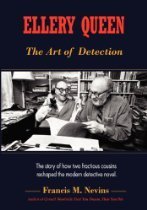
Ellery Queen: The Art of Detection by Francis M. Nevins
Price:$19.95 & eligible for FREE Super Saver Shipping on orders over $25. Details
Availability: Usually ships in 24 hoursShips from and sold by Amazon.com
Ellery Queen: The Art of Detection by Francis M. Nevins
Francis M. Nevins has been a legal aid lawyer, a law school professor, an enthusiastic scholar of classic mystery fiction (particularly the work of Cornell Woolrich), and—for almost forty years—an accomplished author of short stories and novels. He has won an Edgar award twice from the Mystery Writers of America, for scholarly books on Ellery Queen and Woolrich. A collection of Mr. Nevins’s nonfiction, Cornucopia of Crime, was published in 2010. He lives with his wife in University City, Missouri.
Here Nevins delivers his definitive work on "all things Queen." With an extensive bibliography, detailed histories of Ellery Queen in books, movies, radio and television, and reminiscences by both Fred Dannay and Manfred B. Lee who formed the writing partnership that created Ellery Queen, the book provides the most complete account available of how two Brooklyn cousins reshaped the modern detective novel. With 12 pages of photos and an index.
Let's start with the sub-title of your biography: "The story of how two fractious cousins reshaped the modern detective novel."
1. Give us some background on the cousins.
1. The first cousins who called themselves Frederic Dannay and Manfred B. Lee and used the name Ellery Queen for their detective character and their joint byline were born in 1905, nine months and five blocks apart, in Brooklyn's Brownsville district. Fred's family moved upstate to Elmira soon after his birth but returned to the old neighborhood when he was 12. The cousins attended Boys' High together and fell in love with detective fiction together. 2. When did they decide to write mystery stories? 2. In 1928 they were holding down jobs in the advertising and publicity fields when they read about a detective novel writing contest with a huge first prize and decided to enter it, using the name Ellery Queen for both their joint byline and their detective character, who was clearly modeled on S.S. Van Dine's Philo Vance. A few months later they were told unofficially that their novel, The Roman Hat Mystery, had won. Shortly afterwards the magazine co-sponsoring the contest went bankrupt and was bought by another magazine that awarded the prize to someone else. But the other contest sponsor, the Stokes publishing house, agreed to publish Roman Hat anyway.It came out in 1929. 3. What was the most important innovation they brought to the detective genre? 3. Fair play. They took infinite pains to structure their early novels so that the reader---at least if he or she were a genius---could solve the mystery ahead of Ellery. At a certain point in each of those novels, after all the clues had been presented, there appeared a formal "Challenge to the Reader" to figure out "what really happened" before Ellery explained.
4. At what point did the Ellery Queen novels begin to be successful? 4. Fred and Manny kept their day jobs as they wrote the second and third Ellery Queen novels---The French Powder Mystery(1930) and The Dutch Shoe Mystery (1931)---but then, in one of the worst years of the Great Depression, decided to become full-time writers, turning out a new novel every 90 days or so. What guts what decision must have taken!
5. The Queen character was an early version of multi-media, correct?
5. I'm not sure what you mean by multi-media. The first EQ movies came out in 1935 and 1936 but they were terrible and only remotely related to the Queen novels. The Queen radio series debuted in 1939 and, with one long hiatus and a few brief ones, stayed on the air till 1948. Until Fred's first wife was diagnosed with cancer that eventually took her life, he and Manny wrote every weekly drama for the series, with Fred devising the plots and Manny turning them into scripts. The second series of movies (1940-42) was just as bad as the first but the cousins had nothing to do with them. After World War II radio was displaced by television and there were several Queen series but, as with the movies, Fred and Manny had nothing to do with them.
6. When did their "factitiousness" begin to destroy their working relationship? 6. I assume you mean fractious, not factitious. Actually they fought constantly over the Queen novels and short stories but the fights never did destroy their working relationship. They were making a great deal of money and each of them was convinced he couldn't complete a novel without the other. Besides, underneath all the fighting those cousins were as close as brothers and really cared about one another.
7. Which of the partners essentially left the collaboration? 8. How did the Queen "brand" play out after that?
7 and 8. For several years during the late Fifties and the Sixties, Manny developed writer's block and other writers took over his function on the Queen novels. He overcame his problem later in the Sixties and resumed his collaboration with Fred until his death in 1971. He never lived to see a copy of the last finished Queen novel, A Fine and Private Place, or to start work on Fred's synopsis for the next novel, The Tragedy of Errors. Fred, who was 65 when Manny died, decided not to break in a new collaborator.
Published on January 10, 2013 21:11
From Jon Breen--A Fine Review
MONDAY, DECEMBER 11, 2006
Thus I was surprised to learn recently that in the decades since his death Derleth has been the target of attacks for his personal and business practices in s.f., fantasy, and horror fandom. I came across an anthology, published in 2000 and still in print, that I had never heard of before but had to grab. Arkham’s Masters of Horror (Arkham House), edited by Peter Ruber, is ostensibly a collection of stories by contributors over the years to Arkham House’s publishing line, but the substantial introduction and four-or-five-page essays that precede each story add up to a virtual book-length history of the publisher and biography source on its contributors.
Arkham House was, of course, created by Derleth and Donald Wandrei to publish the works of their under-appreciated hero and mentor H.P. Lovecraft. I have read just enough of Lovecraft’s fiction to know he’s not my cup of tea. (I do admire his critical history Supernatural Horror in Literature and enjoy dipping into his letters.) But several of the writers in Ruber’s volume I am especially interested in—Robert Bloch, Ray Bradbury, Vincent Starrett—and the lives of writers in popular fiction genres always interest me.
Ruber’s introduction, “The Un-Demonizing of August Derleth,” is a successful effort to counter the fannish badmouthing of Derleth. In his operation of Arkham House and its imprints, he had to balance his love for what he was publishing and the interests of business, and per Ruber, he accomplished this with integrity, though he was sometimes reluctant to suffer fools gladly.
While I highly recommend this anthology, it suffers the modern plague of terrible proofreading and copy-editing. Ruber frequently uses the word “prolixity” as the noun for the quality of being prolific. I don’t think so.
Speaking of Derleth, one of his stories from the early ‘30s is reprinted in another highly unusual anthology, The Best of 10 Story Book: From Harry Stephen Keeler’s Spicy Magazine 1919-1940 (Ramble House), edited by Chris Mikul. The mag apparently was a semi-slick, under-the-counter fiction-cum-girly magazine, and the anthology includes some period nude photos, tasteful and tame by current standards. Keeler couldn’t pay much, but he boasted of having no taboos, of publishing fiction other magazine editors would not touch. On the basis of Derleth’s “Two Gentlemen at Forty” and Len Zinberg’s “Little Guy,” I believe him. Both stories have a matter-of-fact treatment of homosexuality I never dreamed would have existed in magazine fiction of the ‘30s. (Zinberg later achieved greater fame as Edgar-winning mystery writer Ed Lacy.) Other familiar names in the anthology include Carroll John Daly, Theodore Pratt, Kenneth Fearing, Jack Woodford, Zora Neale Hurston, Vincent Starrett, Harold Q. Masur, and editor Keeler himself with two stories
Published on January 10, 2013 13:46
January 8, 2013
Jimmy Kimmel takes on Jay & Dave - Ken Levine
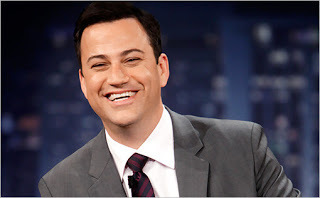
Jimmy Kimmel takes on Jay & Dave by Ken LevineEd here: In case you don't know the name Ken Levine here's a quick sketch. His blog is is unequaled in giving civilians like me a look at how show business works.Nam
Named one of the BEST 25 BLOGS OF 2011 by TIME Magazine. Ken Levine is an Emmy winning writer/director/producer/major league baseball announcer. In a career that has spanned over 30 years Ken has worked on MASH, CHEERS, FRASIER, THE SIMPSONS, WINGS, EVERYBODY LOVES RAYMOND, BECKER, DHARMA & GREG, and has co-created his own series including ALMOST PERFECT starring Nancy Travis. He and his partner wrote the feature VOLUNTEERS. Ken has also been the radio/TV play-by-play voice of the Baltimore Orioles, Seattle Mariners, San Diego Padres. For the last three years Ken has hosted Dodger Talk on the Dodger Radio Network. And currently Ken is back with the Mariners, doing play-by-play.Named one of the BEST 25 BLOGS OF 2011 by TIME Magazine. Ken Levine is an Emmy winning writer/director/Ken Levine:
Best of luck to Jimmy Kimmel who tonight begins his show at 11:35 on ABC. Personally, I’ve always liked Kimmel’s show and found his relaxed style refreshing. To be honest, in the late night wars, the best hosts were on at 12:30. Kimmel, Jimmy Fallon (whose show has more actual entertainmentvalue than any talk show on television), and Craig Ferguson (who’s extremely talented but a little too impressed with himself for my taste).
Kimmel becomes the second member of the “new guard” to try to crack through the established prime time late night scene. Conan was first and fizzled rather loudly. But I think Kimmel is more accessible than O'Brien. Conan’s tongue is permanently imbedded in his cheek and although I think he’s funny, he comes off more as a spoof of a talk show host rather than an actual talk show host. The audience seems to prefer a real person in that role. Conan is now on TBS where he has kind of disappeared. When was the last time you saw Conan that wasn’t a promo on the baseball playoffs? Team Coco fans may outraged by me for saying that, but the truth is his show has underperformed in the ratings. Doing better than George Lopez is not exactly an achievement.
Still, the impulse to give him THE TONIGHT SHOW was a good one. Younger viewers don’t relate to Jay or Dave. And I don’t think any talk show host is being slighted when a network gives him twenty years on the air for an outrageous salary. Johnny Carson, still the Mozart of talk show hosts, knew when to bow out gracefully. Dave and (especially) Jay will go out kicking and screaming. But make no mistake. They will go out.
for the rest go here: http://kenlevine.blogspot.com/2013/01...
Published on January 08, 2013 18:30
Elmore Leonard rips off “Justified”!

Elmore Leonard rips off “Justified”!FROM SALON
The relationship between the creator and the FX hit is as fascinating and complicated as the show itselfBY KRISTOPHER JANSMA
FX’s hit series “Justified,” which returns on Tuesday for its fourth season, has been hailed as groundbreaking for its complex, moral storytelling, its modern-Old West setting of Harlan, Ky., and for its lawman hero, Raylan Givens, perpetually wearing a white cowboy hat and played with no small amount of charm by Timothy Olyphant.But the show has been quietly breaking another kind of ground these past few years. Both the character of Raylan and the world of Harlan come from the pages of master crime-writer Elmore Leonard, who created Givens as a secondary character in two novels about Miami from the mid-’90s, “Pronto” and “Riding the Rap.” It wasn’t until 2001 that Leonard wrote the story “Fire in the Hole,” which made Raylan the star and sent him back home to Kentucky. This story became the basis for the pilot episode of “Justified” in 2010.Of course, Raylan Givens is hardly the first literary character to leave the stories where he was born for the bright lights of film or television — but he may be among the only to return to print. In 2012, after two hit seasons of “Justified” had aired, Elmore Leonard took Raylan Givens back to the page, in a novel titled “Raylan” – his first Givens story since 2001.Stranger still, Leonard got the idea from actor Timothy Olyphant. As “Justified’s” creator Graham Yost explained to GQ, “It started when [Leonard] was visiting the set in the first season and Tim said to him, ‘Hey, why don’t you write another Raylan short story?’” It must have been a surreal moment for Leonard, his own character standing there telling him to write more about him.for the rest go here:
http://www.salon.com/2013/01/08/elmor...
Published on January 08, 2013 06:44
January 7, 2013
Way Cool-"PETER GUNN:- THE COMPLETE SERIES" RELEASED
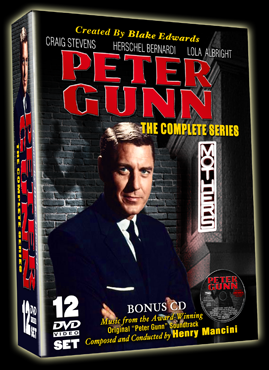
By Harvey F. ChartrandPETER GUNN: THE COMPLETE SERIES is now available for the first time ever as a 12-DVD box set from Timeless Media Group… all 114 episodes, with a running time of over 58 hours. PETER GUNN – created and produced by Blake Edwards – ran for three seasons – from 1958 to 1961. This classic detective show was a delightful blend of film noir and fifties cool, featuring a modern jazz score by Henry Mancini (a bonus CD of the soundtrack is included in the set), outbreaks of the old ultra-violence, a gallery of eccentric and sleazy characters (usually informants, gangsters and Beat Generation bohemians), and great acting by series leads Craig Stevens (as Gunn), Lola Albright (as his squeeze, sultry nightclub singer Edie Hart) and Herschel Bernardi (as Gunn’s friend and competitor Lieutenant Jacoby, who seems to work all by himself 24 hours a day in the 13th Precinct headquarters).Gunn can morph from suave private eye to tough guy handy with his fists in a nanosecond, but it’s refreshing to see how often he is taken by surprise or beaten up and knocked unconscious. Gunn operates out of a nightclub, Mother’s, where Edie Hart is the featured singer. No lonely neon-lit office in the Bradbury Building for him. (And he doesn’t pay Mother, the big tough old broad who runs the joint, any commission for helping him find clients!)Gunn is that rarity… a wealthy shamus, and his services don’t come cheap, unless he’s in a charitable mood. His standard fee is $1,000, and his sterling reputation precedes him, keeping the clients streaming in through Mother’s door. Gunn is a hepcat with expensive tastes. He wears $200 Brooks Brothers suits and resembles an American Cary Grant (which is the pivotal reason why Edwards cast Stevens in the role). Gunn drives around in a cool two-tone Plymouth Fury convertible, equipped with a mobile phone! (This is 55 years ago, folks!) He seems to know just about every high-society type and low-life specimen in town. Stunningly attractive women find Gunn irresistible, but his heart belongs to Edie and he never succumbs to temptation.
for the rest go here: http://www.cinemaretro.com/index.php
Published on January 07, 2013 14:07
January 6, 2013
The Complete John Thunstone by Manley Wade Wellman
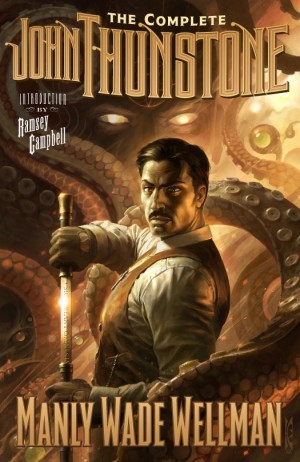
The Complete John ThunstoneManly Wade WellmanEdited by Stephen Haffner
Introduction by Ramsey Campbell
Cover Art by Raymond Swanland
Illustrated by George EvansISBN-13 9781893887596
640+ page Hardcover$40.00
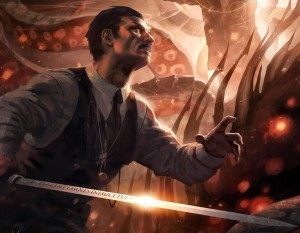 Conceived by Manly Wade Wellman and Weird Tales editor Dorothy McIlwraith in 1943, John Thunstone is a scholar and playboy who investigates mysterious supernatural events. Large and strong, intelligent, handsome, and wealthy, he has the typical attributes of a heroic character. He is also well-read in occult matters and has access to weapons (such as a sword-cane forged by a saint) that are especially potent against vampires, werewolves, and other supernatural creatures. In addition to the ghosts and other traditional supernatural beings, several of Thunstone’s enemies are Wellman’s unique creations. Particularly compelling are the the enigmatic shonokins, a race of human-like creatures who claim to have ruled North America before the coming of humans. Thunstone’s most persistent foe is the diabolical sorcerer Rowley Thorne, a character loosely based on the real occultist Aleister Crowley. Thunstone originally appeared in short stories published in Weird Tales from 1943 to 1951 with a final short story in 1982. Wellman would later write two novels featuring Thunstone: What Dreams May Come (1983) and The School of Darkness (1985).TABLE OF CONTENTS REVIEWS EXCERPTSThe Third Cry to Legba Weird Tales Nov ’43
Conceived by Manly Wade Wellman and Weird Tales editor Dorothy McIlwraith in 1943, John Thunstone is a scholar and playboy who investigates mysterious supernatural events. Large and strong, intelligent, handsome, and wealthy, he has the typical attributes of a heroic character. He is also well-read in occult matters and has access to weapons (such as a sword-cane forged by a saint) that are especially potent against vampires, werewolves, and other supernatural creatures. In addition to the ghosts and other traditional supernatural beings, several of Thunstone’s enemies are Wellman’s unique creations. Particularly compelling are the the enigmatic shonokins, a race of human-like creatures who claim to have ruled North America before the coming of humans. Thunstone’s most persistent foe is the diabolical sorcerer Rowley Thorne, a character loosely based on the real occultist Aleister Crowley. Thunstone originally appeared in short stories published in Weird Tales from 1943 to 1951 with a final short story in 1982. Wellman would later write two novels featuring Thunstone: What Dreams May Come (1983) and The School of Darkness (1985).TABLE OF CONTENTS REVIEWS EXCERPTSThe Third Cry to Legba Weird Tales Nov ’43The Golden Goblins Weird Tales Jan ’44
Hoofs Weird Tales Mar ’44
The Letters of Cold Fire Weird Tales May ’44
John Thunstone’s Inheritance Weird Tales Jul ’44
Sorcery from Thule Weird Tales Sep ’44
The Dead Man’s Hand Weird Tales Nov ’44
Thorne on the Threshold Weird Tales Jan ’45
The Shonokins Weird Tales Mar ’45
Blood from a Stone Weird Tales May ’45
The Dai Sword Weird Tales Jul ’45
Twice Cursed Weird Tales Mar ’46
Shonokin Town Weird Tales Jul ’46
The Leonardo Rondache Weird Tales Mar ’48
The Last Grave of Lill Warran Weird Tales May ’51
Rouse Him Not Kadath Jul ’82
What Dreams May Come, Doubleday 1983
The School of Darkness, Doubleday 1985
Published on January 06, 2013 13:35
January 5, 2013
A Man of Many Names
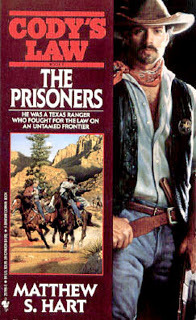
Ed here: Back in the days when publishers published lots of books in every category, writers trying to make a living at their craft took on-work-for-hire books. Many of these were house name books. No, "Jake Logan" has not written several hundred novels ver the decades. Jake Logan is probably close to a sixty or seventy different writers.
This realm of publishing has always fascinated me. Two excellent writers have published serious (if comic) novels on the theme, Donald Westlake's Adios, Scheherazade and Barry Malzberg's Herovit's World. I recommend these without qualification. Brilliant. No kidding.
Friday my friend James Reasoner published (as a Forgotten Books piece) a memoir about one part of the realm I'm alluding to. He also tells us about his amazing writing relationship with his lovely and very talented wife Livia. Really fascinating.

By the way let me recommend James' collection of private eye stories. He is a master of the form and these tales demonstrate his range and skill. He's one of the best storytellers of our time. Only $2.99 http://www.amazon.com/Fort-Worth-Nigh...
Anyway, on with James' great memoir about the days when you could literally sell books with a phone call.
James Reasoner:
I'm probably fudging a little by writing about a book I had a hand in, but the Cody's Law series is long out of print and probably won't ever be reprinted, so it's pretty much forgotten. Besides, Bill mentioned this book recently on an email group we both belong to, and I thought some of you might be interested in it. Warning: this post is as much memoir as it is about the book and has some behind-the-scenes stuff in it, so if that doesn't appeal to you, feel free to move on. My feelings won't be hurt, I promise.
The Cody's Law series came about because the Western editor at Bantam at the time had worked at Leisure earlier in his career and edited a series of Westerns by Roe Richmond about a Texas Ranger named Lashtrow. Some of you have probably read some of those books. Richmond must have been a believer in the freelancer's adage, "Never throw anything away." Because those Lashtrow novels were actually rewrites and expansions of novels that Richmond wrote for the pulp magazine TEXAS RANGERS during the Fifties, featuring Ranger Jim Hatfield. For the paperback version, Hatfield became "Lash" Lashtrow, but the supporting characters all remained the same.
The Bantam editor approached an editor at Book Creations Inc., the book packaging company I was doing a lot of work for at the time, and asked BCI to come up with a Texas Ranger series similar to the Lashtrow books. The editor at BCI was also an author and planned to write the first book in the series, and he asked me if I would continue it from there. I agreed, of course, since back then I never turned down work (I still don't turn it down very often, and only when I just don't have time to do anything else). As it turned out, the editor at BCI was too busy to write the book, so after doing an outline and a couple of chapters he gave it to me and told me to use whatever I wanted out of it. By this time he had mentioned the Roe Richmond/Lashtrow connection to me and asked me if I was familiar with those books. I just said that I was and didn't mention that I was very familiar with the original versions, having read dozens of issues of TEXAS RANGERS including some of Richmond's Jim Hatfield novels. I think I was the only one in this particular loop aware of the true origin of the Lashtrow books.
for the rest go here: http://jamesreasoner.blogspot.com/201...
Published on January 05, 2013 12:11
January 4, 2013
The Power by Frank M. Robinson
SATURDAY, DECEMBER 29, 2007
Another novel I first read in 1956 is The Power by Frank M. Robinson. You may know the name because he's written blockbuster international bestsellers as well as award-winning science fiction novels.
The Power was his first novel. If Cornell Woolrich had ever used the paranormal in any coherent way he'd have done something like The Power. It's a perfect noir, a dark chase novel through Chicago as a small group of scientists try to find out which of them has The Power. Robinson enriches the book by giving us, on the fly, a wry look at academia of that era. He also gives us a man so alone and desperate as to make Richard Kimble of The Fugitive look like a game show contestant. Like I Am Legend, I reread this every so often. I yet to come across a single moment in it that I would change in any way.I'm pretty sure you'll like and admire this one as much as I do.
Published on January 04, 2013 17:44
January 3, 2013
VILLAINS
SATURDAY, MAY 23, 2009VillainsIn the Guardian (UK) Michael Hann responds to David Thomson's piece about movie villains. The major and minor ones of different types.
"David Thomson thinks it's Robert Shaw – even when, as in Jaws, he's on the side of the angels, David believes Shaw to have the been the scariest man to stride across the cinema screens. So who are the greatest villains in cinema history? They must be characters who compel us to watch, people who make us wonder: what happened to make them that way?
"So those villains who are set up purely to teach us about the hero – as in the likes of Zodiac or Rear Window – don't work. Not least because you never get to encounter them as real characters. Nor do "supervillains" – the likes of Blofeld or the Joker in either his Ledger or Nicholson guises – because we know they are not and can never be real. They are cartoons, and we know they exist only to entertain.
"The villains who truly terrify are those who we might plausibly encounter, if we are unlucky, if our lives go right off the rails, if we simply happen to be in their path when they come through town. They are those who bring disorder, the thing that those of us whose lives follow patterns fear most. They are the likes of Anton Chigurh in No Country for Old Men, who holds the life of a petrol station attendant in his fingers, even if the hapless old man doesn't realise it. We are horrified, because of the discrepancy between our knowledge and the petrol pumper's. Or Tommy DeVito in Goodfellas, who turns from genial to petrifying in the blink of an eye, and – worse for us – does so without recognising the distinction. Or Tommy's homegrown cousin, Trainspotting's Begbie, whom an awful lot of YouTube posters seem to regard, worryingly, as a role model."
Ed here:
"The villains who truly terrify are those who we might plausibly encounter, if we are unlucky, if our lives go right off the rails, if we simply happen to be in their path when they come through town."
If that's the measure I'd go with Robert Mitchum in Cape Fear and Joe Pesci in Casino. Mitchum is controlled madness, Pesci is a psychopath with no control whatsoever. Mitchum's lizard looks and Pesci's compulsive explosions are what we hear about on the news today. For instance, in NYC yesterday a man ran his car into a traffic agent about to give him a parking ticket; a few days ago a man tore out his small son's eye; a woman threw her four month old baby out the window of a speeding car.
The other night I quoted Robert Bloch about his crime novels and how he tried to cope with "The terrible inability to understand the irrational behavior of certain human beings, what is it that impels that sometime senseless sadistic cruelty."
There's been a merging of horror and crime fiction and you'll find many examples in both genres. The stuff of this merger scares me (as a reader and viewer) far more than the traditional approach of haunted houses and spooky trappings. Stephen King is largely responsible for this. Carrie terrified because the emotional center of the fear was Carrie's reaction to the horrors of high school, horrors many us us have suffered.
A fair share of King's short stories give us nightmares because they're rooted in reality. Even a complete fantasy such as The Mangler--about a laundry press machine with murderous intentions--gives us the creeps because many of us are luddites and suspect that we aren't using machines, they're using us. Hell, look at our relationship with our computers. A fair share of us work every day at their mercy. They can take a day off and tell us to shove it. They just might be be able to do a lot of to do a lot of other things, too. Things we don't like to think about especially when we see what the Japanese are starting to do with robots.
All this bears on the villains we create today. The original Cape Fear had the power to shock because audiences had rarely seen a madman like Mitchum on the screen. And each decade since then has built on that Mitchum icon, trying to put him in a more contemporary setting without losing any of his animal lunacy. Some of these versions work; far too many don't. The Bad Guy has become a cliche. But true villain--the real Boogeyman--has likely been with us since (in whatever form) we crawled from the sea.
I grew up with men like Robert Shaw--dangerous and unpredictable Irishers. Scary men. I also knew a few guys, later on, who were at least shirttail kin to the Mitchum icon--breathtakingly cruel. One of them ended up being stabbed to death by the wife he'd beaten over the course of many years. She had her leg in a cast thanks to him the night she killed him. He came at her and she picked up a butcher knife and that was that. The jury was out less than an hour. She walked. It was way past time.
To me the most haunting villains have this streak of almost inhuman cruelty in them, a kind of cruelty that makes them unrecognizable as people. . I think that's what Robert Bloch was talking about. Think about Lou Ford in Jim Thompson's The Killer Inside Me.
Hell just take a minute and study Dick Cheney's face. It's all there.
How do you folks feel about villainy?
for the rest of the Michael Hann article go here:
http://www.guardian.co.uk/film/filmbl...
Published on January 03, 2013 16:53
Ed Gorman's Blog
- Ed Gorman's profile
- 118 followers
Ed Gorman isn't a Goodreads Author
(yet),
but they
do have a blog,
so here are some recent posts imported from
their feed.




